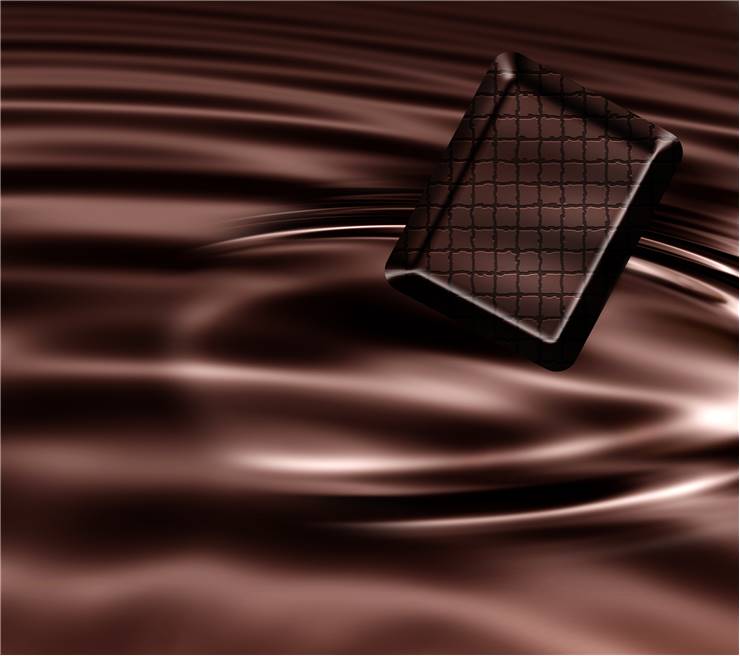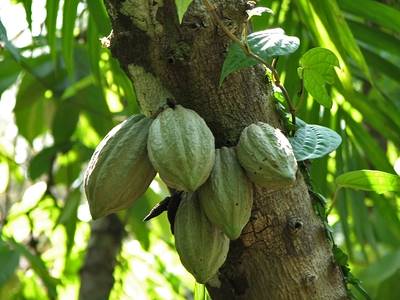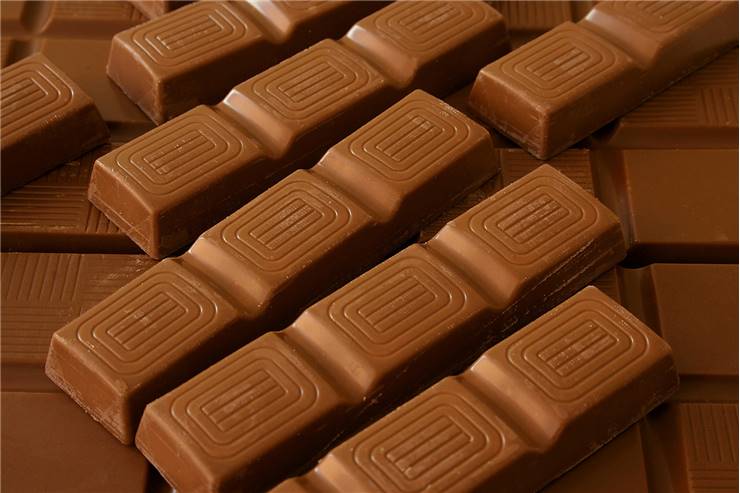Chocolate Caffeine Content Facts
Every year, people eat about three million tons of cacao beans worldwide as chocolate. Many people never considered chocolate's caffeine content to play a significant role in their life.
Chocolate is made from the cocoa bean (also called cacao bean), found in pods growing from the trunk and lower branches of the Cacao tree, which Latin name 'Theobroma Cacao' literally means “food of the gods". Cacao trees are tropical plants that grow in Africa, Central and South America, and parts of Asia, where the weather is hot (within 20 degrees latitude of the Equator).
Chocolate derived from cocoa beans is a weak stimulant. It contains two stimulating methylxanthines (a class of alkaloid molecules), a significant amount of theobromine (and theophylline) and a small amount of caffeine. The slight stimulatory effect of chocolate is it seems as much due to the combination of theobromine and theophylline than caffeine.

Generally, caffeine and theobromine have very different effects on different people. Theobromine is relatively mild and helps elevate serotonin levels producing a really nice side effect of feeling good over a longer period of time. Caffeine is a stronger stimulant and acts relatively quickly as a wake-up drug. Compared to the caffeine, the theobromine has about one-quarter the stimulating power.
However, chocolate contains too little of these compounds to create a similar effect to portion equal to coffee. A typical cacao bean contains less than 1/20th of the caffeine present in coffee (from zero to 1000 parts per million of caffeine per bean).
The caffeine content in the cocoa beans varies with the type of beans and the degree of fermentation.
The caffeine content in the cacao pod is found mainly in the shell or membrane which encloses the cacao beans. Cacao beans which had the surrounding membrane removed before processing will contain almost no caffeine. Generally, the chocolate made from more expensive beans will be of higher quality and essentially free of caffeine. Also, the caffeine content from chocolate can be removed.
So why should we worry about the presence of caffeine in chocolate?
Caffeine can be addictive stimulant, but there is not enough caffeine in chocolate to label it "addictive".
We do not need to be worried about chocolate caffeine content unless caffeine in an off itself is a problem for us. When compared to common sources of caffeine, the quantity of caffeine found in chocolate has no major effect on most people.
Milk chocolate contains about 3.5 to 6mg of caffeine per ounce. That is about 12 to 21mg of caffeine per 3.5 ounce or 100g chocolate (155 to 200 theobromine).
A bar of milk chocolate of 30g contains about as much caffeine as a cup of decaffeinated coffee.
Dark chocolate can measure between 5 to 20mg caffeine per ounce of chocolate. That is about 17.5 to 70mg per 3.5 ounce or 100g chocolate. But some dark chocolates can contain as much as 160 mg per 100g.

We need still have to eat an eight-ounce bar of semi-sweet to get anywhere near the caffeine content of a cup of real coffee.
An average 8 ounce cup of milk chocolate contains about 4mg of caffeine.
Average 8-ounce glass of chocolate milk has the same amount of caffeine as a cup of decaffeinated coffee.
An 8 ounce cup of hot cocoa contains about 3 to 13mg of caffeine.
White chocolate does not contain caffeine, because it does not contain any cocoa solids. It can be eaten by people who cannot consume caffeine for medical reasons.
For comparison: (for average 8 ounce cup)
A cup of regular coffee contains between 65 and 150mg of caffeine.
A cup of tea may contain 15 to 100 mg of caffeine.
A cup of cacao beverage may contain zero to 25 mg of caffeine.
Note: All figures are approximate, this site does not provide medical advice, diagnosis or treatment.


